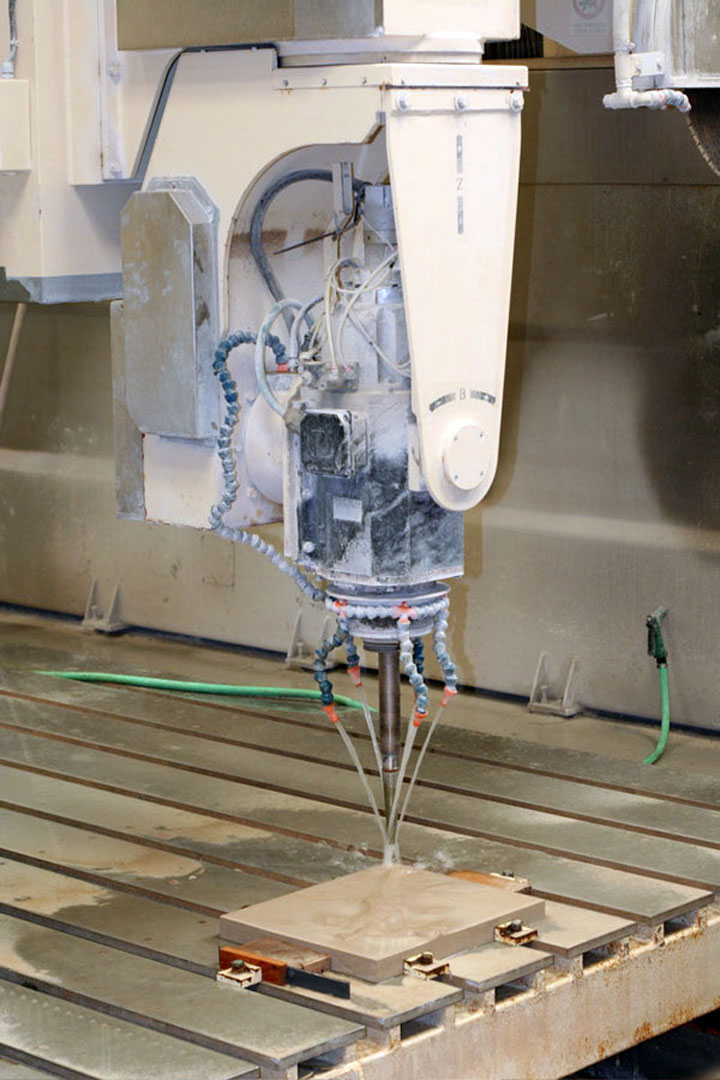“Digital bas-relief from 3D scenes” by Weyrich, Deng, Barnes, Rusinkiewicz and Finkelstein
Conference:
Type(s):
Title:
- Digital bas-relief from 3D scenes
Presenter(s)/Author(s):
Abstract:
We present a system for semi-automatic creation of bas-relief sculpture. As an artistic medium, relief spans the continuum between 2D drawing or painting and full 3D sculpture. Bas-relief (or low relief) presents the unique challenge of squeezing shapes into a nearly-flat surface while maintaining as much as possible the perception of the full 3D scene. Our solution to this problem adapts methods from the tone-mapping literature, which addresses the similar problem of squeezing a high dynamic range image into the (low) dynamic range available on typical display devices. However, the bas-relief medium imposes its own unique set of requirements, such as maintaining small, fixed-size depth discontinuities. Given a 3D model, camera, and a few parameters describing the relative attenuation of different frequencies in the shape, our system creates a relief that gives the illusion of the 3D shape from a given vantage point while conforming to a greatly compressed height.
References:
1. Ashikhmin, M. 2002. A tone mapping algorithm for high contrast images. In EGRW ’02: Proceedings of the 13th Eurographics workshop on Rendering, Eurographics Association, Aire-la-Ville, Switzerland, Switzerland, 145–156. Google ScholarDigital Library
2. Belhumeur, P. N., Kriegman, D. J., and Yuille, A. L. 1999. The bas-relief ambiguity. International Journal of Computer Vision 35, 1 (Nov.), 33–44. Google ScholarDigital Library
3. Cignoni, P., Montani, C., and Scopigno, R. 1997. Automatic generation of bas- and high-reliefs. Journal of Graphics Tools 2, 3, 15–28. Google ScholarDigital Library
4. DeCarlo, D., Finkelstein, A., Rusinkiewicz, S., and Santella, A. 2003. Suggestive contours for conveying shape. ACM Transactions on Graphics (SIGGRAPH ’03) 22, 3 (July), 848–855. Google ScholarDigital Library
5. DiCarlo, J., and Wandell, B. 2000. Rendering high dynamic range images. In Proceedings of the SPIE Electronic Imaging ‘2000 conference, vol. 3965, 392–401.Google Scholar
6. Durand, F., and Dorsey, J. 2002. Fast bilateral filtering for the display of high-dynamic-range images. ACM Transactions on Graphics (SIGGRAPH ’02) 21, 3 (July), 257–266. Google ScholarDigital Library
7. Fattal, R., Lischinski, D., and Werman, M. 2002. Gradient domain high dynamic range compression. ACM Transactions on Graphics (SIGGRAPH ’02) 21, 3 (July), 249–256. Google ScholarDigital Library
8. Flaxman, J. 1829. Lectures on Sculpture. Charles Knight, Pall Mall East, London.Google Scholar
9. Gooch, A., Gooch, B., Shirley, P. S., and Cohen, E. 1998. A non-photorealistic lighting model for automatic technical illustration. In Computer Graphics (Proc. of ACM SIGGRAPH ’98), 447–452. Google ScholarDigital Library
10. Hertzmann, A., and Zorin, D. 2000. Illustrating smooth surfaces. In Computer Graphics (Proc. of ACM SIGGRAPH ’00), 517–526. Google ScholarDigital Library
11. Hockney, D. 2001. Secret Knowledge: Rediscovering the Lost Techniques of the Old Masters. Viking Press.Google Scholar
12. Hoffman, M. 1939. Sculpture Inside and Out. W. W. Norton & Company, New York.Google Scholar
13. Larson, G. W., Rushmeier, H., and Piatko, C. 1997. A visibility matching tone reproduction operator for high dynamic range scenes. IEEE Transactions on Visualization and Computer Graphics 3, 4 (October – December), 291–306. Google ScholarDigital Library
14. Markosian, L., Kowalski, M. A., Trychin, S. J., Bourdev, L. D., Goldstein, D., and Hughes, J. F. 1997. Real-time nonphotorealistic rendering. In Computer Graphics (Proc. of ACM SIGGRAPH ’97), 415–420. Google ScholarDigital Library
15. Meier, B. J. 1996. Painterly rendering for animation. In Computer Graphics (Proceedings of SIGGRAPH 96), 477–484. Google ScholarDigital Library
16. Raskar, R., Ziegler, R., and Willwacher, T. 2002. Cartoon dioramas in motion. In NPAR 2002: Second International Symposium on Non Photorealistic Rendering, 7–12. Google ScholarDigital Library
17. Read, H. 1961. The Art of Sculpture, 2nd ed. Bollingen Foundation, New York.Google Scholar
18. Reinhard, E., Stark, M., Shirley, P., and Ferwerda, J. 2002. Photographic tone reproduction for digital images. In SIGGRAPH ’02: Proceedings of the 29th annual conference on Computer graphics and interactive techniques, ACM Press, New York, NY, USA, 267–276. Google ScholarDigital Library
19. Sourin, A. 2001. Functionally based virtual embossing. The Visual Computer 17, 4, 258–271.Google ScholarCross Ref
20. Späth, C., 2006. The digital stone project. http://digitalstoneproject.org/.Google Scholar
21. Tumblin, J., and Turk, G. 1999. LCIS: A boundary hierarchy for detail-preserving contrast reduction. In Computer Graphics (Proc. of SIGGRAPH ’99), 83–90. Google ScholarDigital Library
22. Winkenbach, G., and Salesin, D. H. 1996. Rendering parametric surfaces in pen and ink. In Computer Graphics (Proc. of ACM SIGGRAPH ’96), 469–476. Google ScholarDigital Library
23. Yen, J., and Séquin, C. 2001. Escher sphere construction kit. 2001 Acm Symposium on Interactive 3D Graphics (March), 95–98. Google ScholarDigital Library





